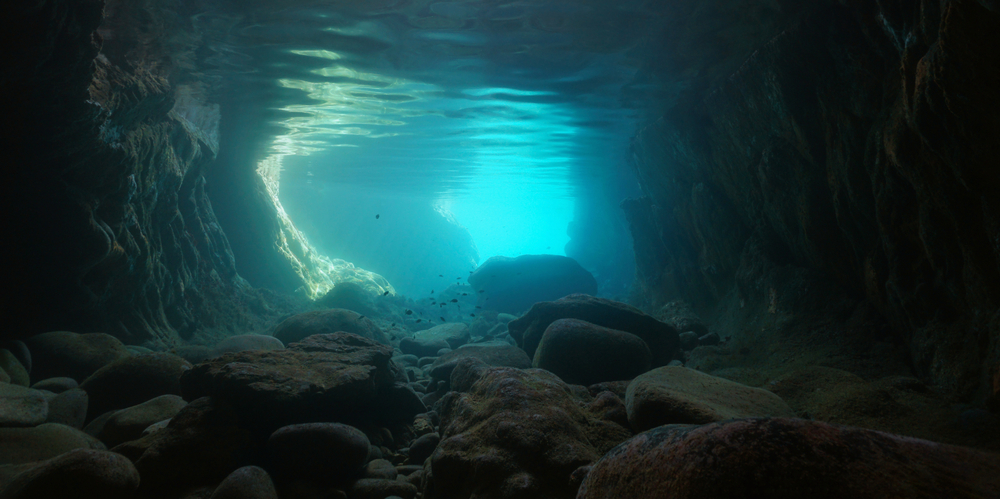Despite all we’ve learned through science, certain mysteries remain stubbornly unsolved, almost as if they’re daring us to uncover them. How can something that makes up most of the universe remain invisible to us? Why do we experience consciousness, that sense of awareness that feels so close yet is so hard to explain? And what will ultimately become of the universe we inhabit? Questions like these remind us that, while we’ve come a long way, there are still vast frontiers waiting to be explored.
In this article, we’ll dive into three of the most intriguing mysteries that science has yet to fully explain: dark matter, consciousness, and the fate of the universe. These puzzles not only push the boundaries of what we know but also challenge us to think beyond the visible and tangible. Each of them stands as a reminder that the unknown can inspire us just as much as what we already understand.
The Elusive Nature of Dark Matter
Imagine something that makes up nearly all of the universe—about 85% of it, to be exact—but we can’t see it, touch it, or directly detect it. That’s dark matter. It’s this invisible “stuff” that scientists know is there because of how it tugs on galaxies and holds everything together. Without it, galaxies would just fall apart. But even though we know it exists, we’re still left scratching our heads about what dark matter actually is.
Scientists have spent years trying to explain this mystery. Some think dark matter is made of particles called WIMPs (Weakly Interacting Massive Particles). These particles are so elusive they just slip through everything else without leaving a trace. Others suggest we might need to rethink gravity itself, especially on the massive scale of the universe, to account for what we’re seeing.
Even with all the advanced technology we have—giant detectors, powerful telescopes—dark matter keeps its secrets. Figuring it out wouldn’t just check a box; it could totally change how we see the universe and even give us clues about what the future holds for everything around us. For now, dark matter is like a cosmic secret, reminding us that we’re still in the early chapters of understanding the universe.
Exploring the Twilight Zone of the Ocean
While space often captures the imagination when it comes to exploration, Earth’s oceans hold mysteries just as profound. One such mystery lies within the ocean’s “twilight zone,” a layer of water between 200 and 1,000 meters below the surface where sunlight fades, creating an environment that is barely explored. This shadowy region is home to countless unknown species, some of which may play crucial roles in maintaining Earth’s climate by cycling carbon and regulating nutrients.
The creatures that dwell in the twilight zone exhibit unique adaptations for survival in an environment with scarce light and food. Some species use bioluminescence to attract prey or confuse predators, creating a mesmerizing light show in the depths of the ocean. Scientists believe that the biomass in this zone may exceed that of all other oceanic layers combined, an ecological treasure that could offer new resources and insights into marine biology. However, studying this zone comes with significant challenges, as the technology needed to operate at such depths is expensive and complex.
The twilight zone presents a range of challenges for researchers. Unlike the surface or deeper ocean zones that have been extensively studied, this region is difficult to access and observe. Recent advancements in remote-controlled submarines and underwater technology have begun to shed light on this mysterious realm, but much remains unknown. Scientists speculate that this layer holds vast fish populations with potential impacts on global fisheries and food security. These ecosystems are delicate and could be affected by overfishing, climate change, and pollution, making the need to understand them even more urgent.

The Rise and Fall of Venus
Our neighboring planet Venus presents another gripping mystery: why did it transform into a fiery wasteland, while Earth flourished with life? Venus and Earth are often called “sister planets” due to their similar size, composition, and distance from the sun. However, where Earth developed conditions suitable for life, Venus turned into an inhospitable inferno with surface temperatures hot enough to melt lead and an atmosphere thick with carbon dioxide.
Theorists have long debated how such a close twin could follow such a divergent path. Some believe that Venus once had oceans and a temperate climate, but that a catastrophic greenhouse effect, potentially triggered by volcanic eruptions, led to its demise. Others suggest that solar winds may have stripped away any early water, preventing the development of an Earth-like environment. These hypotheses fuel a growing interest in studying Venus further, with upcoming missions by NASA and other space agencies aimed at uncovering more of its secrets.
Scientists believe Venus may have once harbored oceans, but something triggered a dramatic climate shift, resulting in its current harsh conditions. Understanding Venus’s transformation could provide insights into the forces that stabilize climates on rocky planets and offer warnings about potential climate scenarios on Earth. As researchers gear up for future missions to Venus, they hope to uncover evidence of its watery past and learn whether Earth’s “sister” ever had conditions similar to ours. Exploring Venus may one day help us protect our planet from a similar fate.
The Unknown Future of Animal Evolution
While much of evolution’s past is mapped through fossils and genetics, predicting the future of evolution is a challenging task. Human activities such as urbanization, pollution, and climate change have dramatically altered the planet’s ecosystems, prompting scientists to wonder: how will animals adapt to these changes over the coming millennia?
Experts predict that future evolutionary adaptations may favor animals that can thrive in human-altered environments. For example, some urban species might evolve smaller body sizes, enabling them to maneuver in confined spaces, or develop nocturnal habits to avoid human disturbances. On a larger scale, marine life may adapt to warmer and more acidic oceans, while land animals may evolve to endure pollution and habitat loss. These speculative projections underscore the resilience of life, but they also serve as reminders of humanity’s profound impact on Earth’s biodiversity.
Biologists propose several possibilities for the future of animal evolution. Some predict that animals will develop traits allowing them to thrive in human-dominated landscapes, such as resilience to pollutants or a reliance on urban food sources. This evolutionary guessing game highlights the resilience of life on Earth, yet it also raises ethical and environmental concerns. How we choose to manage natural habitats and combat climate change today will shape the paths that evolution takes, impacting not only future species but also the balance of Earth’s ecosystems. The future of animal evolution is one of the most dynamic mysteries, pointing to both nature’s adaptability and humanity’s influence on the natural world.

Consciousness: The Mind’s Greatest Mystery
Perhaps the most profound mystery lies within our own minds: the nature of human consciousness. Despite extensive research, scientists and philosophers alike remain puzzled by the origins and mechanisms of consciousness. While we understand some brain functions, such as memory and perception, consciousness itself—the experience of being aware—is still beyond full comprehension.
Some scientists believe that understanding consciousness may require a paradigm shift in how we view the mind and brain. Emerging theories suggest that consciousness might not be confined to human beings but could be a fundamental property of the universe, as essential as gravity or electromagnetism. Meanwhile, advanced neuroimaging tools are enabling researchers to observe brain patterns associated with conscious thought, but these studies have yet to answer why or how subjective experiences arise from physical processes.
Research into consciousness often falls into two camps: physicalist theories that explain consciousness as a product of neural activity, and dualist theories that suggest it may involve non-material elements. Scientists use technologies like fMRI and EEG to map brain activity, revealing patterns associated with awareness. Yet, no theory has definitively answered how these patterns translate into the experience of consciousness. Understanding this enigma could revolutionize fields ranging from artificial intelligence to mental health, shedding light on the mind’s depths and the very essence of what it means to be human. Consciousness remains a frontier of both scientific and philosophical exploration, bridging the tangible with the intangible.
The Universe’s Fate: How Will It End?
The universe had a beginning, so it makes sense to wonder—how’s it all going to end? It’s one of those questions that feels almost impossible to wrap our heads around, but scientists are trying. They’ve come up with a few big theories, each as mind-bending as the last.
One idea is the “Big Freeze.” In this scenario, the universe just keeps expanding, with everything drifting farther and farther apart until, eventually, it all goes cold and dark—no more stars, no more heat, just emptiness. Another possibility is the “Big Crunch,” where, instead of expanding forever, the universe could start pulling back on itself, ending up as one super-dense, hot point again. And then there’s the “Big Rip,” which sounds like the wildest one: if the universe keeps expanding faster and faster, it could eventually tear galaxies, stars, and even atoms apart. Talk about an intense finale.
What makes this tricky is that so much of it depends on dark matter and dark energy, two forces we don’t fully understand. Dark matter holds things together, while dark energy is pushing the universe to expand. Figuring out what these mysterious forces actually are could give us some real clues about where the universe is headed. But until then, we’re left with some pretty epic guesses—and a whole lot of mystery.
Embracing the Unknown: The Quest for Answers

When you think about these big mysteries—dark matter, consciousness, and what might happen to the universe—it’s pretty mind-blowing. There’s so much we still don’t understand! But maybe that’s what makes it all so interesting. These aren’t just questions with easy answers; they’re like doors that open into even bigger questions.
Every time scientists make a discovery, it feels like they’re getting closer, but somehow, new questions pop up. And that’s kind of the beauty of it. Science isn’t always about finding all the answers right away. It’s about exploring, learning, and just being curious about everything we don’t know yet.
So, who knows where this will all lead? Maybe we’ll solve some of these mysteries, or maybe we’ll just keep finding more things to wonder about. Either way, the adventure of figuring it out is what makes it all worth it.
Sources:
- Deep-sea discovery shines light on life in the twilight zone. (2024, September 24). ScienceDaily. https://www.sciencedaily.com/releases/2024/09/240925123650.htm#:~:text=The%20ocean’s%20twilight%20zone%20is,growth%20of%20bacteria%20is%20restricted.
- Paulson, S., Chalmers, D., Kahneman, D., Santos, L., & Schiff, N. (2013). The thinking ape: the enigma of human consciousness. Annals of the New York Academy of Sciences, 1303(1), 4–24. https://doi.org/10.1111/nyas.12165

